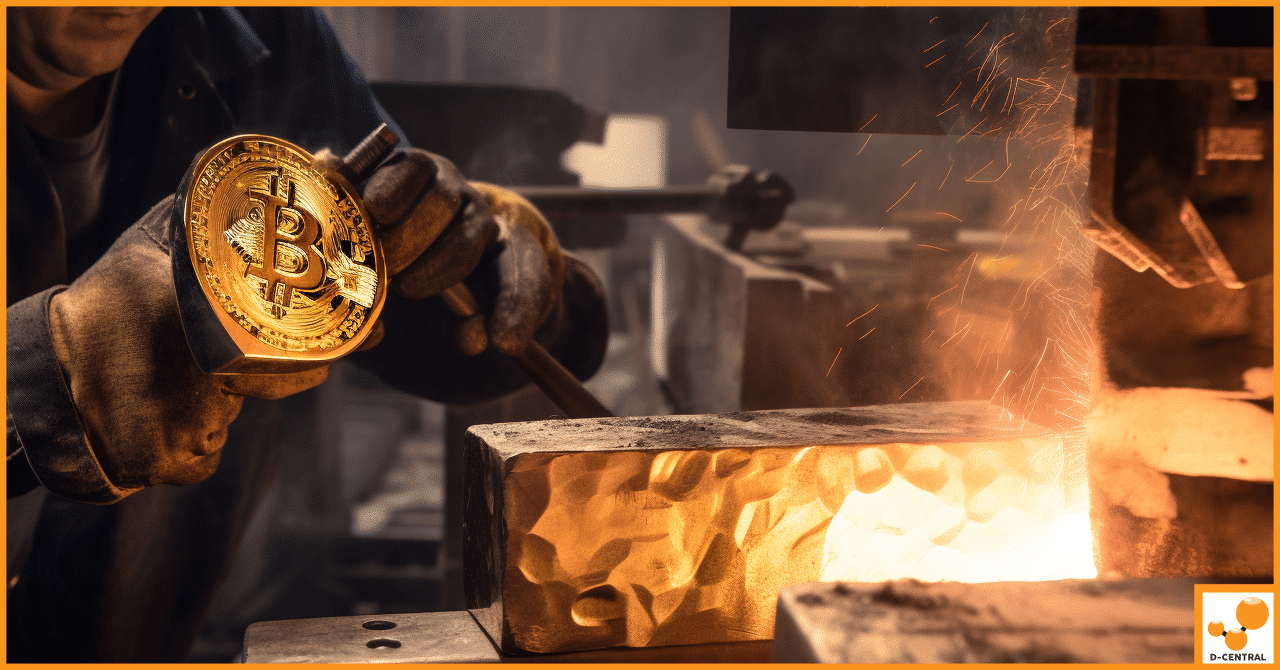
The Impact of North American Heatwaves on Bitcoin Mining
Summer heatwaves across North America have a significant impact on Bitcoin mining operations. As temperatures soar, the highly potent machines
4479 Desserte Nord Autoroute 440, Laval, QC H7P 6E2

In the rapidly evolving world of cryptocurrency mining, Application-Specific Integrated Circuit (ASIC) miners have emerged as the linchpins of efficiency and profitability. Unlike their predecessors—general-purpose CPUs and GPUs—ASIC miners are designed with a singular focus: to mine cryptocurrencies with unparalleled precision and speed. This specialization allows them to outperform general computing devices by leaps and bounds, making them the preferred choice for serious miners aiming to maximize their returns in the competitive crypto mining landscape.
However, the superior performance of ASIC miners comes with its own set of challenges, chief among them being the need for meticulous maintenance. The continuous and intensive operation required for mining can take a toll on the hardware, leading to potential downtimes, decreased efficiency, and even premature failure if not properly managed. This is where the concept of maintenance planning becomes crucial. Effective maintenance planning encompasses a comprehensive approach to the upkeep of ASIC miners, ensuring they operate at peak efficiency for as long as possible. It involves regular inspections, cleaning, updates, and repairs—all orchestrated with the goal of minimizing disruptions and extending the lifespan of the mining hardware.
The significance of maintenance planning for ASIC miners cannot be overstated. In an industry where every second counts and downtime directly translates to lost revenue, ensuring that mining equipment is running smoothly and efficiently is paramount. Moreover, with the high initial investment required for ASIC mining setups, protecting this investment through proactive maintenance is essential for achieving a favorable return on investment (ROI). Through effective maintenance planning, miners can not only safeguard their hardware against common pitfalls but also optimize their operations to stay ahead in the ever-competitive race for cryptocurrency rewards.
Application-Specific Integrated Circuit (ASIC) miners are specialized hardware devices engineered exclusively for cryptocurrency mining. Unlike general-purpose computing devices such as CPUs (Central Processing Units) and GPUs (Graphics Processing Units), ASIC miners are designed to perform the specific cryptographic calculations required by a particular blockchain protocol, making them incredibly efficient at mining certain types of cryptocurrencies.
Definition and Explanation: ASIC miners are the culmination of technological advancement in the field of cryptocurrency mining, offering unparalleled efficiency and speed. These devices are tailored to execute one particular hashing algorithm, which means they can mine cryptocurrencies like Bitcoin, which uses the SHA-256 algorithm, with exceptional proficiency. This specialization allows ASIC miners to achieve higher hash rates and consume less power compared to CPUs and GPUs, translating into more effective mining operations.
Comparison with Other Mining Hardware (GPUs, CPUs): CPUs, the most versatile form of computing hardware, are capable of performing a wide range of tasks but lack the efficiency and speed of ASICs in mining due to their general-purpose design. GPUs, on the other hand, offer a middle ground, providing substantial parallel processing power that makes them suitable for mining cryptocurrencies that require complex computational work. However, GPUs are still less efficient than ASICs for mining specific cryptocurrencies because ASICs are tailor-made for that exact purpose. The advent of ASIC miners has significantly raised the bar for mining efficiency, rendering CPU and GPU mining less profitable for certain cryptocurrencies.
The journey of ASIC mining is a testament to the rapid innovation and growth within the cryptocurrency sector. From the early days of Bitcoin mining, where CPUs reigned supreme, to the subsequent adoption of GPUs and FPGAs (Field-Programmable Gate Arrays), each leap in technology has been driven by the relentless pursuit of greater efficiency and profitability.
Historical Perspective on ASIC Miner Development: ASIC miners first entered the cryptocurrency mining scene around 2013, marking a pivotal shift in the mining landscape. Their introduction was met with both excitement and controversy, as they significantly outperformed existing hardware, leading to increased centralization in mining operations. Over the years, ASIC technology has continued to evolve, with newer generations offering improvements in power efficiency, hash rate, and cooling solutions, further cementing their dominance in the mining industry.
Impact on Cryptocurrency Mining Efficiency and Profitability: The advent of ASIC miners has dramatically transformed the efficiency and profitability of cryptocurrency mining. By delivering unmatched hash rates while minimizing power consumption, ASICs have enabled miners to achieve higher profits and lower operational costs. However, this efficiency comes with increased entry barriers for new miners and concerns over centralization, as the high cost of ASIC hardware and the continuous need for upgrades can limit mining to well-capitalized individuals or companies. Despite these challenges, the development of ASIC miners has undeniably pushed the boundaries of what’s possible in cryptocurrency mining, driving the industry towards more sophisticated and efficient mining operations.
The relentless pursuit of cryptocurrency rewards demands not only cutting-edge hardware but also a strategic approach to maintenance. Effective maintenance planning is not just about fixing what’s broken; it’s about preemptive actions to ensure ASIC miners operate at peak efficiency, enjoy a prolonged lifespan, and incur minimal operational costs.
How Regular Maintenance Impacts ASIC Miner Performance: Regular maintenance is crucial for sustaining the high performance of ASIC miners. Dust accumulation, inadequate cooling, and outdated firmware can all impede miner efficiency, leading to lower hash rates and increased power consumption. By adhering to a scheduled maintenance plan that includes cleaning, cooling system checks, and software updates, miners can ensure their hardware operates at optimal efficiency.
Case Studies or Examples of Efficiency Improvements:
The Role of Maintenance in Preventing Premature Hardware Failure: Consistent maintenance is key to preventing the premature failure of ASIC miners. Overheating, one of the leading causes of hardware degradation, can be mitigated through regular cleaning and cooling system maintenance. Similarly, firmware updates can prevent bugs and compatibility issues that might otherwise lead to hardware malfunctions.
Discussion on the Cost Benefits of Prolonging Miner Life: Extending the lifespan of ASIC miners directly impacts the bottom line of mining operations. By delaying the need for costly hardware replacements, miners can maximize the return on their initial investment. For instance, a mining operation that extends the life of its ASIC miners by 20% through effective maintenance can significantly increase profitability over the hardware’s operational period.
Analysis of How Effective Maintenance Planning Can Lower Electricity Consumption and Repair Expenses: Effective maintenance planning can lead to substantial savings in electricity consumption and repair expenses. For example, keeping ASIC miners clean and well-cooled prevents them from working harder than necessary, which in turn reduces power usage. Additionally, regular maintenance can identify minor issues before they escalate into major problems, thereby saving on costly repairs.
Tips for Optimizing Mining Operations to Reduce Costs:
By embracing a proactive approach to maintenance, cryptocurrency miners can enhance the efficiency, longevity, and profitability of their ASIC mining operations, ensuring they remain competitive in the fast-paced world of cryptocurrency mining.
Maintaining ASIC miners is critical for ensuring their optimal performance and longevity. This section delves into the essential maintenance practices that every miner should incorporate into their routine to safeguard their investment and maximize profitability.
Best Practices for Keeping ASIC Miners Clean:
The Importance of Dust Management and Its Impact on Miner Performance: Dust accumulation is one of the primary adversaries of ASIC miner efficiency. It can clog cooling systems, reduce airflow, and insulate heat-generating components, leading to increased operating temperatures. High temperatures can throttle the miner’s performance and, over time, cause premature hardware failure. Effective dust management ensures that miners operate within optimal temperature ranges, preserving their efficiency and extending their operational lifespan.
Strategies for Efficient Cooling and Temperature Management:
The Consequences of Overheating and How to Avoid Them: Overheating can significantly degrade ASIC miner performance and lead to hardware damage. It can cause thermal throttling, where the miner automatically reduces its performance to lower its temperature, resulting in decreased mining efficiency. In severe cases, overheating can lead to permanent damage to the miner’s components. Maintaining an efficient cooling and temperature management system is crucial to prevent these adverse outcomes and ensure the miner’s continuous, optimal operation.
The Importance of Keeping Firmware and Mining Software Up to Date: Firmware and software updates often contain critical performance improvements, security patches, and bug fixes. Manufacturers regularly release updates to enhance the functionality of ASIC miners, optimize their hash rate, and reduce power consumption. Keeping the firmware and mining software updated ensures that miners are running the most efficient and secure version of their operating system.
How Software Updates Can Enhance Mining Efficiency and Security:
Incorporating these key components into the maintenance routine of ASIC miners is essential for anyone serious about cryptocurrency mining. By ensuring clean, cool, and updated hardware, miners can achieve better efficiency, extend the lifespan of their equipment, and secure their mining operations against potential threats.
A well-structured maintenance schedule is pivotal for the longevity and efficiency of ASIC miners. This section outlines how to create a maintenance calendar and leverage predictive maintenance and monitoring tools to preempt potential issues, ensuring your mining operation runs smoothly and efficiently.
Step-by-Step Guide on Setting Up a Maintenance Schedule:
Tools and Resources for Tracking Maintenance Activities:
By establishing a comprehensive maintenance calendar and incorporating predictive maintenance and monitoring into your routine, you can significantly enhance the reliability, efficiency, and lifespan of your ASIC miners. This proactive approach not only safeguards your investment but also optimizes your mining operation’s profitability.
The journey through the intricacies of ASIC miner maintenance underscores a fundamental truth in the realm of cryptocurrency mining: the health and efficiency of your mining hardware are pivotal to the success and profitability of your operations. Effective maintenance planning emerges not just as a recommendation but as a necessity, ensuring that your ASIC miners continue to operate at their peak, day in and day out.
The importance of a well-structured maintenance plan cannot be overstated. It is the backbone of sustainable mining operations, safeguarding against unexpected downtimes, prolonging the lifespan of your valuable hardware, and optimizing overall mining efficiency. By adhering to the best practices outlined—from regular cleaning and dust management to cooling, temperature control, and timely software updates—you set the stage for a mining operation that not only survives but thrives in the competitive landscape of cryptocurrency mining.
We strongly encourage miners at all levels, from the hobbyist to the large-scale operation, to implement a comprehensive maintenance strategy. Tailor this strategy to the unique needs of your setup, taking into account the specific requirements of your ASIC miners and the conditions under which they operate. Remember, a proactive approach to maintenance is invariably more cost-effective than reactive repairs.
For those looking to deepen their understanding of ASIC miner maintenance or seeking specific advice tailored to their mining setup, a wealth of resources is available. From manufacturer manuals and online forums to dedicated cryptocurrency mining blogs, the community is rich with information and individuals willing to share their knowledge and experiences.
However, for personalized assistance or to tackle complex maintenance challenges, do not hesitate to contact professional maintenance services. These experts can provide targeted advice, perform specialized maintenance tasks, and help optimize your mining operation to its fullest potential.
In conclusion, the path to successful and profitable cryptocurrency mining is paved with diligent maintenance planning. By embracing the principles and practices of effective ASIC miner maintenance, you not only protect your investment but also enhance your competitive edge in the dynamic world of cryptocurrency mining.
What is an ASIC miner?
An ASIC (Application-Specific Integrated Circuit) miner is a hardware device specifically designed for mining cryptocurrencies. Unlike general-purpose CPUs and GPUs, ASIC miners are tailored to execute one particular hashing algorithm, making them highly efficient for mining certain types of cryptocurrencies, such as Bitcoin.
Why is maintenance planning important for ASIC miners?
Maintenance planning is crucial for ASIC miners to ensure they operate at peak efficiency, have a prolonged lifespan, and incur minimal operational costs. Regular maintenance prevents downtimes, decreases efficiency, and premature failure, safeguarding the investment and enabling a favorable return on investment (ROI).
How does regular maintenance impact ASIC miner performance?
Regular maintenance, including cleaning, cooling system checks, and software updates, is vital for sustaining high performance of ASIC miners. It prevents dust accumulation, inadequate cooling, and outdated firmware, which can impede miner efficiency, lead to lower hash rates, and increase power consumption.
What are the key components of ASIC miner maintenance?
The key components of ASIC miner maintenance include cleaning and dust management to prevent overheating, cooling and temperature control to maintain optimal operating conditions, and firmware updates and software management to ensure miners operate with the latest performance improvements and security patches.
How can I set up a maintenance schedule for my ASIC miners?
Setting up a maintenance schedule involves assessing your ASIC miners’ specific needs, determining the frequency of each maintenance task based on those needs and manufacturer recommendations, creating a calendar for scheduling the tasks, assigning tasks to team members, and regularly reviewing and adjusting the schedule as necessary.
What tools can help in tracking maintenance activities for ASIC miners?
Tools such as digital calendars (e.g., Google Calendar, Microsoft Outlook) and maintenance management software can assist in scheduling, reminding, and tracking maintenance tasks. Additionally, hardware monitoring software can provide real-time data on miners’ performance and health, aiding in scheduling maintenance activities based on actual hardware conditions.
DISCLAIMER: D-Central Technologies and its associated content, including this blog, do not serve as financial advisors or official investment advisors. The insights and opinions shared here or by any guests featured in our content are provided purely for informational and educational purposes. Such communications should not be interpreted as financial, investment, legal, tax, or any form of specific advice. We are committed to advancing the knowledge and understanding of Bitcoin and its potential impact on society. However, we urge our community to proceed with caution and informed judgment in all related endeavors.
Related Posts

Summer heatwaves across North America have a significant impact on Bitcoin mining operations. As temperatures soar, the highly potent machines

Cryptocurrency mining stands as a cornerstone of the digital currency world, underpinning the security and functionality of blockchain networks. This

The demand for energy-efficient and eco-friendly solutions is ever-growing in today’s industrial landscape. Metal fabrication shops, a critical part of